Artificial Harmonics: The Basics
In the last several columns we have talked about harmonics using open strings. These are often referred to as “natural” harmonics. If we play harmonics on a string while fully stopping the string somewhere else, (for example, if we press down an A on our G string and then play a harmonic above that) these are referred to as “artificial” harmonics.
So where are these artificial harmonics to be found? If we consider the string length to be the distance between our stopped note (i.e. our finger) and the bridge, we can find them in the same way we found our open string harmonics. We divide the string into equal parts. (See “Harmonics: A Starter Guide for Bassists” for more information). Although the harmonics will be on a different place over the fingerboard, and different pitches will result, the same divisions of the string apply. Of course, many would require the use of two hands and would thus only be available to us when playing pizzicato. A shame, since artificial harmonics tend to sound best when playing arco.
Thankfully, the most common artificial harmonics fall into a range accessible in one hand. The most widespread artificial harmonics are played by stopping the string with the thumb while lightly touching the string with another finger a P5th, P4th, or Mj3rd above the stopped note.
In the examples below, we fully close the G with our thumb and lightly press the string at the harmonic node above it. The diamond shaped noteheads indicate where we are to play the harmonic. When playing artificial harmonics, it is important that the thumb presses more firmly than the finger playing the harmonic.
If we play an artificial harmonic a Perfect Fifth away from the stopped note, the resulting pitch will be One Octave and a Perfect Fifth above the pressed note. In this case a D.
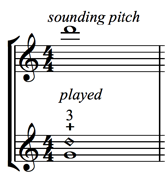
If we play an artificial harmonic a Perfect Fourth away from the stopped note, the resulting pitch will be Two Octaves above the pressed note. In this case a G.
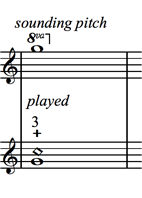
If we play an artificial harmonic a Major Third away from the stopped note, the resulting pitch will be Two Octaves and a Major Third above the pressed note. In this case a B.
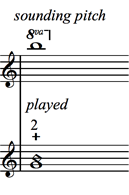
If we did the same thing while stopping an A with the thumb the results would be like so:
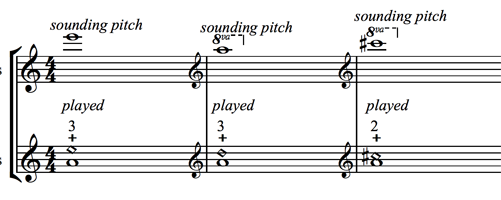
The same intervals as defined above apply, but different pitches result because we have shortened the string by fully stopping it with the thumb on an A.
So, to recap, Artificial harmonics played:
- A Perfect 5th from the stopped note result in a pitch One Octave and a Perfect Fifth above the pressed note.
- A Perfect Fourth away from the stopped note result in a pitch Two Octaves above the pressed note.
- A Major Third away from the stopped note, result in a pitch Two Octaves and a Major Third above the pressed note
Enjoy your newly found range!
Dr. Donovan Stokes is on the faculty of Shenandoah University-Conservatory. Visit him online at www.donovanstokes.com and check out the Bass Coalition at www.basscoalition.com.
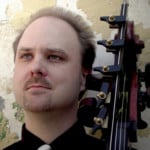
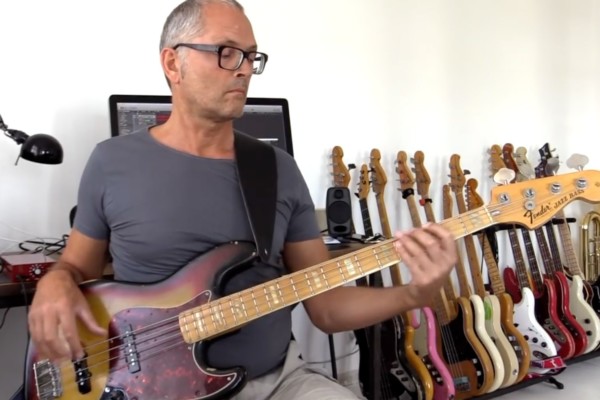
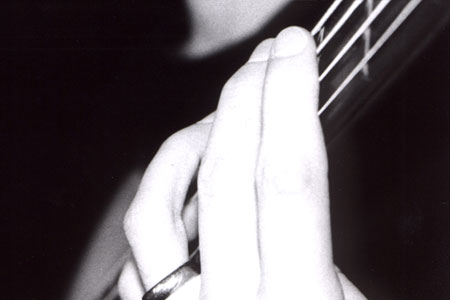
I never understood why the term is “Artificial Harmonic”? It is as if the harmonic is fake. It isn’t fake, it is a very real harmonic identical in sound as an “Open Harmonic”. If you fret the string with a capo and play a harmonic you couldn’t otherwise play open, is that an “Artificial Harmonic?”
Michael Manring makes extensive use of “Open Harmonics” by constantly retuning his bass.
Wouldn’t a better term for these “Non-Open-Harmonics” be: “Fretted Harmonic” or “Stopped Harmonic”.
Perhaps. However, artificial harmonic is the standard term as of today. Might change in the future though!
I’ve heard the term “stopped harmonic” used in conjunction pretty frequently with this term. I think artificial just meant originally that you couldn’t pluck the same part of the string as open harmonics. Kind of similar to a guitar player using a capo.
A good example of these are at the beginning of Jaco’s line in Weather Report’s “Birdland”.
http://www.youtube.com/watch?v=pqashW66D7o